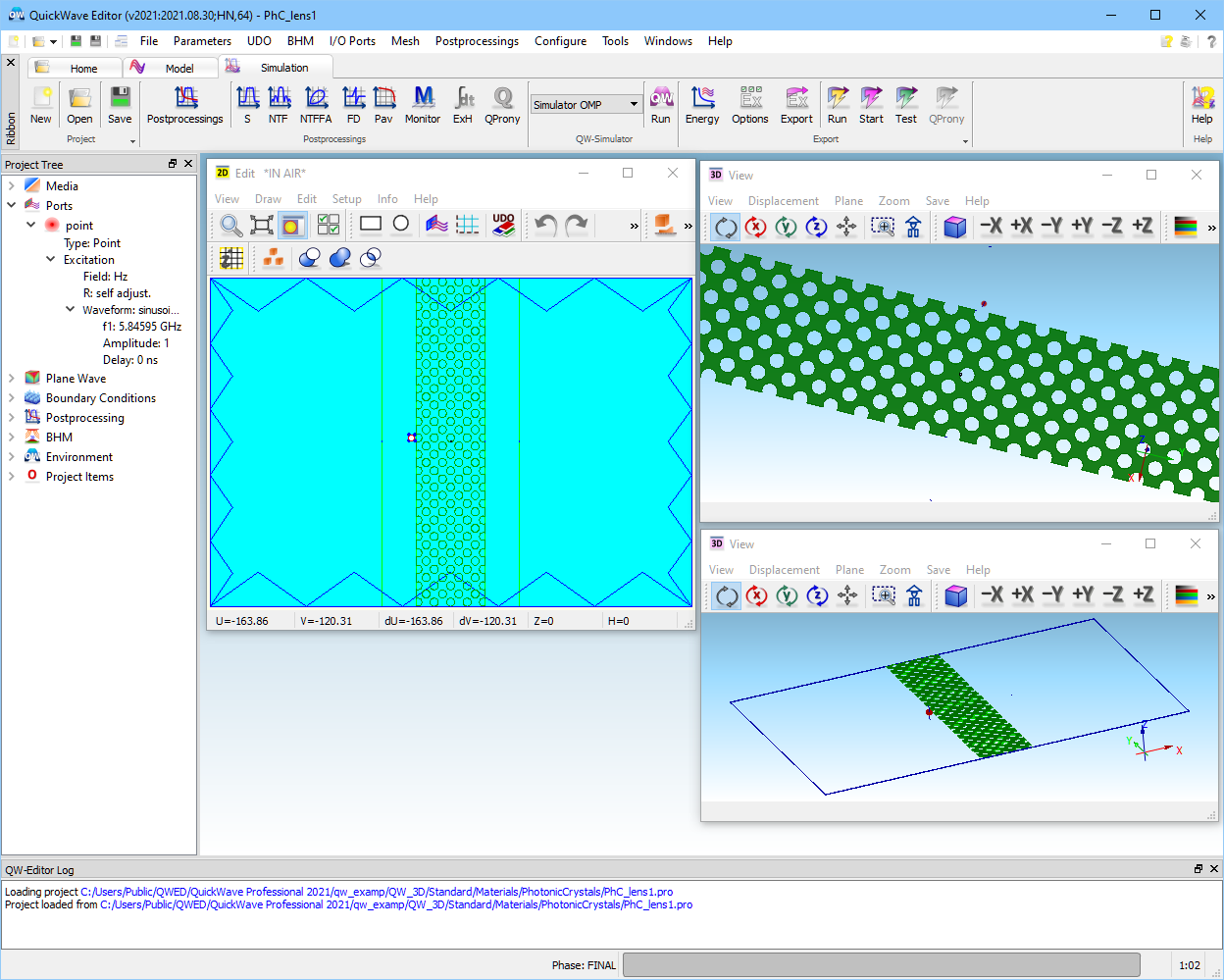
2.18.3 2D photonic crystal lens
Fig. 2.18.3-1 Flat PhC lens considered in PhC_lens1.pro.
This example shows application of an all-angle negative refraction effect obtained using PhC slab. We leave theoretical consideration how to design such structure and focus on a specific application, namely PhC slab that operates like a focusing lens. However, unlike typical optical lenses it is of the orders of magnitude smaller and, most of all, flat. Thus, it is much easier to be manufactured and due to a compact shape it can be used as a casing element. The Fig. 2.18.3-1 presents about 60 mm thick dielectric slab (εr = 12) with air holes of radius r = 3.5 mm arranged in a lattice with constant a = 10 mm [M6]. It has been tuned in a manner to manifest its specific behaviour at f = 5.846 GHz. Nevertheless, it should be strongly emphasized that since geometry of PhC is scalable we can observe the same phenomenon in any frequency range providing that we properly rescale scenario maintaining electric properties unchanged. Besides, unlike spherical lens, since an optical axis does not appear in PhC lens there is no issue of source misalignment.
To exemplify focusing effect we put a TE polarized point source in close vicinity of the PhC slab. Fig. 2.18.3-2 shows a snapshot of the Poynting vector obtained in this scenario. What is meaningful, we observe a real point image of the excitation source on the opposite side of the slab.
Fig. 2.18.3-2 Snapshot of the Poynting vector in a decibel scale obtained in the PhC_lens1.pro at f = 5.846 GHz.